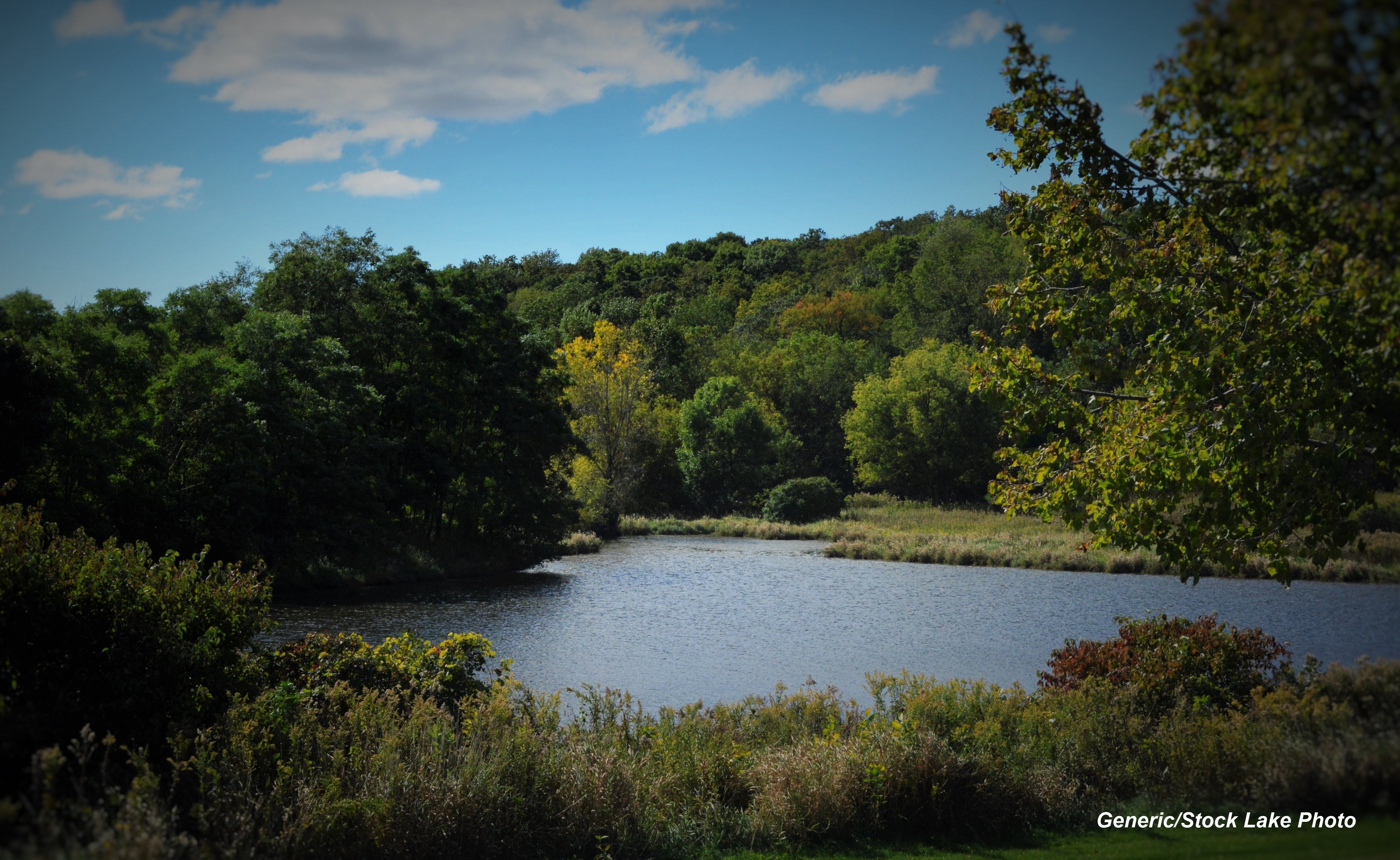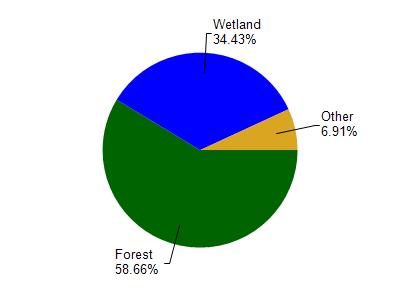
142.44 Acres
Shallow Seepage
2017
Fair
Mercury Contaminated Fish Tissue
Mercury
Iron
No
No
Yes
Fish and Aquatic Life
Overview
Lake Six is a soft water seepage lake having slightly alkaline, light brown water of very low transparency. Transparency at the time of survey was restricted due to water turbidity. An intermittent outlet is found on the east shore and is tributary to Swamp Creek which is part of the North Fork of the Flambeau River drainage. An intermittent inlet is found on the south shore. Sand is the predominant littoral material (60 percent) with muck (30 percent), gravel (5 percent) and some rubble. The shoreline is predominantly upland (65 percent) with the balance being wetland of the coniferous type with meadow, bog and some shrub. Northern pike, perch, black bullhead, and minnows inhabit this lake. Largemouth bass have been present; however, their present status is questionable due to the winterkill conditions that prevail. Waterfowl use this lake during migrations and for nesting. Wood duck and grebe have been observed. Emergent and submergent vegetation is moderate in density in various parts of the lake basin while floating vegetation is sparse. There are no developments located on the shoreline. Public access with limited parking from an unimproved launching site is apparently available. The status of the present public access situation is unknown. It presently appears that there may be some agreement between the town or county with an industrial forest owner providing for access to this lake. A temperature profile taken on August 8, 1964 revealed a surface temperature of 75 degrees Fahrenheit and a bottom temperature of 73 degrees Fahrenheit. For practical purposes the lake becomes nearly homothermous. As previously mentioned, periodic winterkill is a problem.
Source:1970, Surface Water Resources of Iron County,WI:WI-DNR Lake Six, T43N, R2E, Section 6 Surface Acres = 147.4, S.D.F. = 1.29, Maximum Depth = 11 feet.
Date 1970
Author Aquatic Biologist
Condition
Wisconsin has over 84,000 miles of streams, 15,000 lakes and milllions of acres of wetlands. Assessing the condition of this vast amount of water is challenging. The state's water monitoring program uses a media-based, cross-program approach to analyze water condition. An updated monitoring strategy (2015-2020) is now available. Compliance with Clean Water Act fishable, swimmable standards are located in the Executive Summary of Water Condition in 2018. See also the 'monitoring and projects' tab.
Reports
Management Goals
Wisconsin's Water Quality Standards provide qualitative and quantitative goals for waters that are protective of Fishable, Swimmable conditions [Learn more]. Waters that do not meet water quality standards are considered impaired and restoration actions are planned and carried out until the water is once again fishable and swimmable
Management goals can include creation or implementation of a Total Maximum Daily Load analysis, a Nine Key Element Plan, or other restoration work, education and outreach and more. If specific recommendations exist for this water, they will be displayed below online.
Monitoring
Monitoring the condition of a river, stream, or lake includes gathering physical, chemical, biological, and habitat data. Comprehensive studies often gather all these parameters in great detail, while lighter assessment events will involve sampling physical, chemical and biological data such as macroinvertebrates. Aquatic macroinvertebrates and fish communities integrate watershed or catchment condition, providing great insight into overall ecosystem health. Chemical and habitat parameters tell researchers more about human induced problems including contaminated runoff, point source dischargers, or habitat issues that foster or limit the potential of aquatic communities to thrive in a given area. Wisconsin's Water Monitoring Strategy was recenty updated.
Grants and Management Projects
Monitoring Projects
| WBIC | Official Waterbody Name | Station ID | Station Name | Earliest Fieldwork Date | Latest Fieldwork Date | View Station | View Data |
|---|
| 2294500 | Lake Six | 10019791 | Lake Six -- Boat Ramp | 6/16/2010 | 6/22/2010 | Map | Data |
| 2294500 | Lake Six | 10002738 | Lake Six | 8/29/2000 | 9/21/2017 | Map | Data |
| 2294500 | Lake Six | 263130 | Lake Six at Point Of Max. | 7/27/2000 | 5/6/2001 | Map | Data |
| 2294500 | Lake Six | 264008 | Six Lake - Six Lake | | | Map | Data |
|

Watershed Characteristics
Lake Six is located in the Upper North Fork Flambeau River watershed which is 158.21 mi². Land use in the watershed is primarily forest (58.60%), wetland (34.40%) and a mix of grassland (2.90%) and other uses (4.00%). This watershed has 163.80 stream miles, 629.65 lake acres and 33,475.50 wetland acres.
Nonpoint Source Characteristics
This watershed is ranked Low for runoff impacts on streams, Low for runoff impacts on lakes and Low for runoff impacts on groundwater and therefore has an overall rank of Low. This value can be used in ranking the watershed or individual waterbodies for grant funding under state and county programs.However, all waters are affected by diffuse pollutant sources regardless of initial water quality. Applications for specific runoff projects under state or county grant programs may be pursued. For more information, go to surface water program grants.
Six Lake is considered a Shallow Seepage under the state's Natural Community Determinations.
Natural communities (stream and lake natural communities) represent model results and DNR staff valiation processes that confirm or update predicted conditions based on flow and temperature modeling from historic and current landscape features and related variables. Predicated flow and temperatures for waters are associated predicated fish assemblages (communities). Biologists evaluate the model results against current survey data to determine if the modeled results are corect and whether biological indicators show water quaity degradation. This analysis is a core component of the state's resource management framework. Wisconsin's Riverine Natural Communities.
Shallow seepage lake describes the depth and location of the lake in a watershed. These variables affect the lakes response to watershed variables.